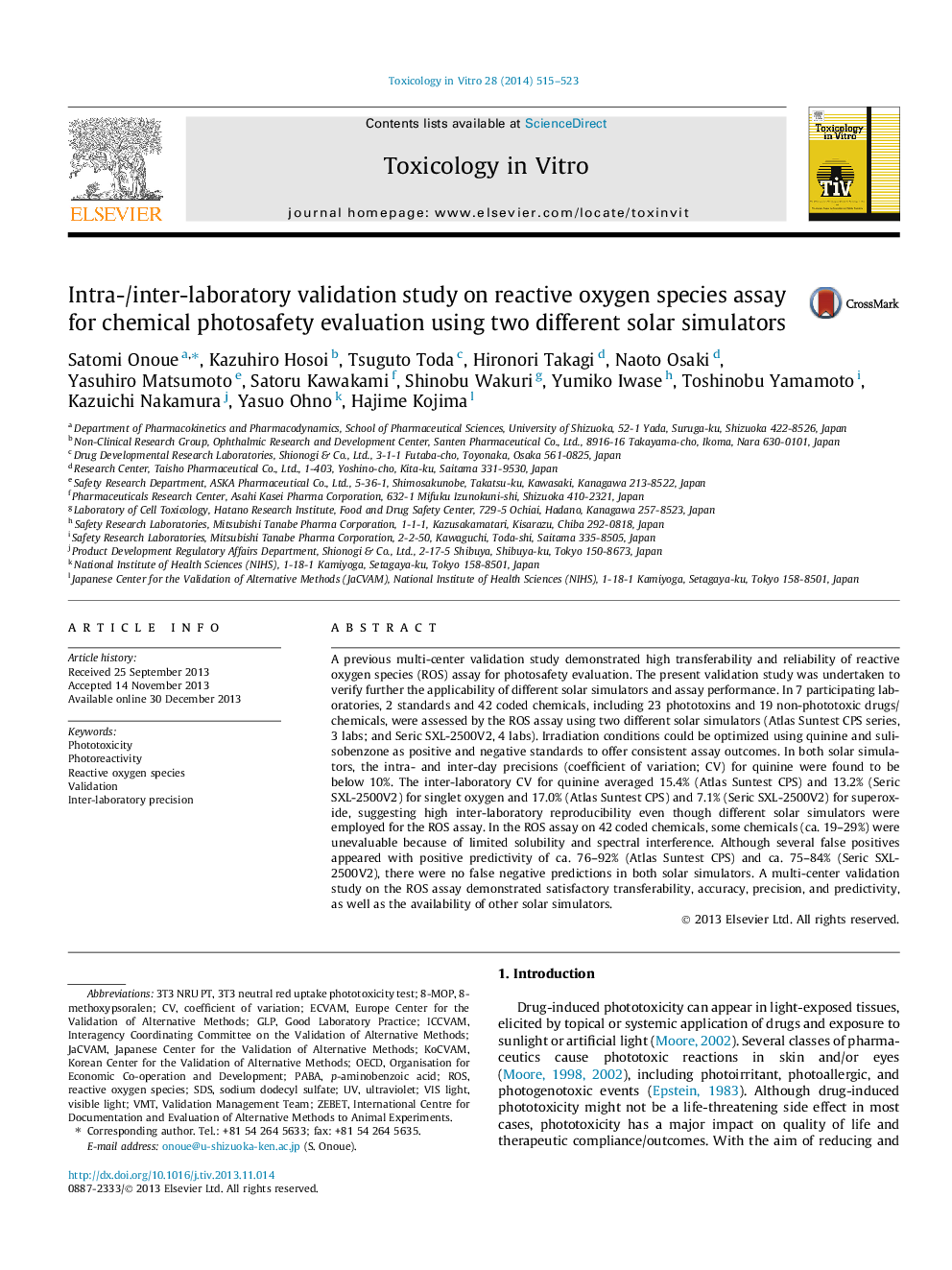| کد مقاله | کد نشریه | سال انتشار | مقاله انگلیسی | نسخه تمام متن |
|---|---|---|---|---|
| 5862062 | 1133772 | 2014 | 9 صفحه PDF | دانلود رایگان |
- ROS assay was developed for the photosafety assessment of pharmaceutical substance.
- Present study aimed to validate a protocol for ROS assay using two different solar simulators.
- Although several false positives appeared, there were no false negative predictions in both solar simulators.
- Validation study demonstrated satisfactory transferability, accuracy, precision, and predictivity.
A previous multi-center validation study demonstrated high transferability and reliability of reactive oxygen species (ROS) assay for photosafety evaluation. The present validation study was undertaken to verify further the applicability of different solar simulators and assay performance. In 7 participating laboratories, 2 standards and 42 coded chemicals, including 23 phototoxins and 19 non-phototoxic drugs/chemicals, were assessed by the ROS assay using two different solar simulators (Atlas Suntest CPS series, 3 labs; and Seric SXL-2500V2, 4 labs). Irradiation conditions could be optimized using quinine and sulisobenzone as positive and negative standards to offer consistent assay outcomes. In both solar simulators, the intra- and inter-day precisions (coefficient of variation; CV) for quinine were found to be below 10%. The inter-laboratory CV for quinine averaged 15.4% (Atlas Suntest CPS) and 13.2% (Seric SXL-2500V2) for singlet oxygen and 17.0% (Atlas Suntest CPS) and 7.1% (Seric SXL-2500V2) for superoxide, suggesting high inter-laboratory reproducibility even though different solar simulators were employed for the ROS assay. In the ROS assay on 42 coded chemicals, some chemicals (ca. 19-29%) were unevaluable because of limited solubility and spectral interference. Although several false positives appeared with positive predictivity of ca. 76-92% (Atlas Suntest CPS) and ca. 75-84% (Seric SXL-2500V2), there were no false negative predictions in both solar simulators. A multi-center validation study on the ROS assay demonstrated satisfactory transferability, accuracy, precision, and predictivity, as well as the availability of other solar simulators.
Journal: Toxicology in Vitro - Volume 28, Issue 4, June 2014, Pages 515-523
